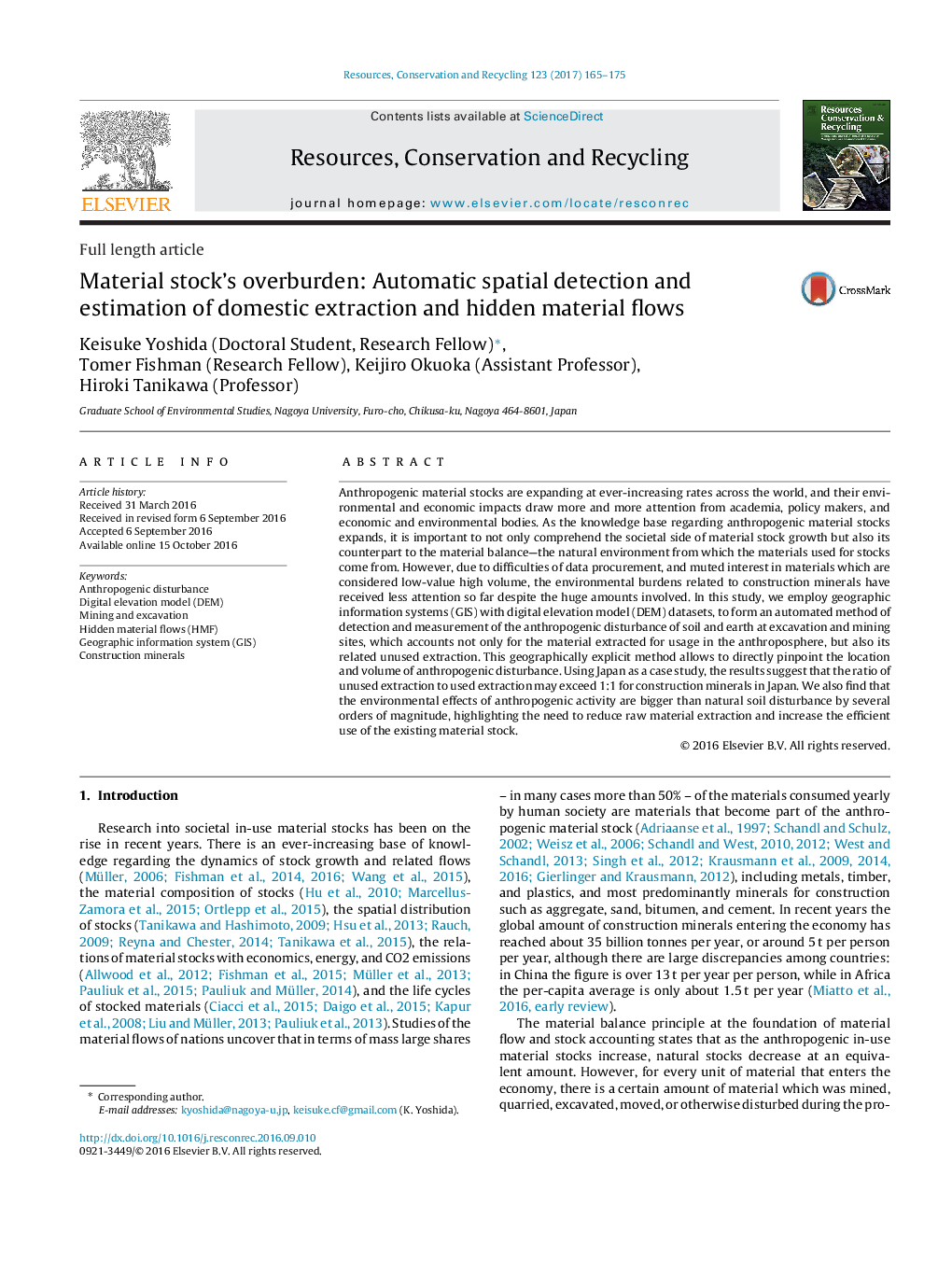| کد مقاله | کد نشریه | سال انتشار | مقاله انگلیسی | نسخه تمام متن |
|---|---|---|---|---|
| 5118830 | 1485669 | 2017 | 11 صفحه PDF | دانلود رایگان |
Anthropogenic material stocks are expanding at ever-increasing rates across the world, and their environmental and economic impacts draw more and more attention from academia, policy makers, and economic and environmental bodies. As the knowledge base regarding anthropogenic material stocks expands, it is important to not only comprehend the societal side of material stock growth but also its counterpart to the material balance-the natural environment from which the materials used for stocks come from. However, due to difficulties of data procurement, and muted interest in materials which are considered low-value high volume, the environmental burdens related to construction minerals have received less attention so far despite the huge amounts involved. In this study, we employ geographic information systems (GIS) with digital elevation model (DEM) datasets, to form an automated method of detection and measurement of the anthropogenic disturbance of soil and earth at excavation and mining sites, which accounts not only for the material extracted for usage in the anthroposphere, but also its related unused extraction. This geographically explicit method allows to directly pinpoint the location and volume of anthropogenic disturbance. Using Japan as a case study, the results suggest that the ratio of unused extraction to used extraction may exceed 1:1 for construction minerals in Japan. We also find that the environmental effects of anthropogenic activity are bigger than natural soil disturbance by several orders of magnitude, highlighting the need to reduce raw material extraction and increase the efficient use of the existing material stock.
Journal: Resources, Conservation and Recycling - Volume 123, August 2017, Pages 165-175
